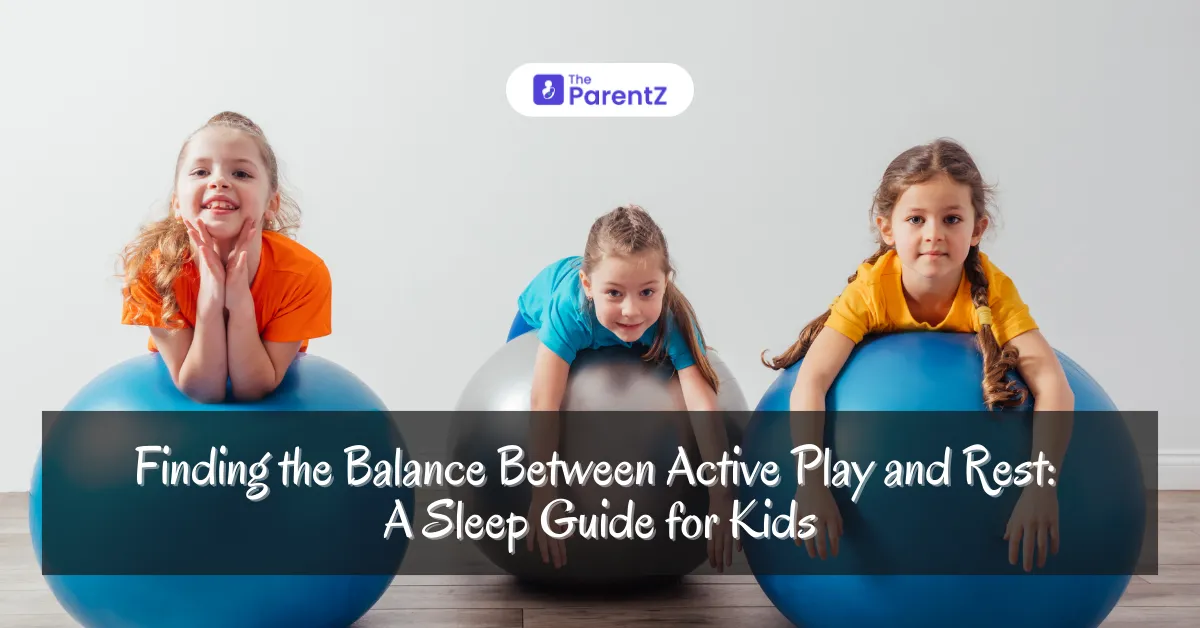As parents, we often find ourselves juggling countless responsibilities, from work to household chores, all while trying to ensure our children are happy, healthy, and well-rested. One of the most important aspects of a child’s well-being is the balance between active play and rest. Understanding how these two elements interact can seriously impact your child’s sleep quality and overall development. Let’s explore this balance in detail and provide you with practical tips to help your kids thrive.
The Importance of Active Play
Active play is not just about having fun; it’s essential for a child’s physical, emotional, and cognitive development. Engaging in physical exercises helps children develop motor skills, coordination, and strength. According to health experts, children should aim for at least 1 hour of active play each day. This can include running, jumping, climbing, or even playing tag—activities that get their hearts pumping and bodies moving.
Benefits of Active Play
- Physical Health: Regular physical activity helps maintain a healthy weight, strengthens bones and muscles, and supports cardiovascular health.
- Emotional Development: Play allows children to express their emotions and learn to cope with challenges. It fosters resilience and helps them develop social skills like cooperation and empathy.
- Cognitive Growth: Active play stimulates brain development by encouraging creativity, problem-solving, and critical thinking skills.
Types of Active Play
- Outdoor Games: Soccer, basketball, or simply running around in the park.
- Creative Play: Building forts or engaging in obstacle courses.
- Imaginative Play: Role-playing games that involve movement.
The Role of Rest
While active play is crucial for development, so is rest. Sleep is vital for children as it supports growth, cognitive function, and emotional regulation. During sleep, the body repairs itself, consolidates memories, and processes information learned throughout the day.
How Much Sleep Do Kids Need?
- Infants (0-1 year): 14-17 hours per day
- Toddlers (1-3 years): 11-14 hours per day
- Preschoolers (3-5 years): 10-13 hours per day
- School-age children (6-12 years): 9-11 hours per day
- School-age teens (13-18 years): 8-10 hours per day
Despite these recommendations, studies show that many children do not get the sleep they need. This lack can lead to behavioral issues, difficulty concentrating in school, and increased risk of obesity.
Finding the Right Balance
So how do we strike a balance between active play and rest? Here are some ways that can help:
Establish a Routine
Children thrive on routine. Create a daily schedule that includes time for active play as well as designated rest periods. For example:
- Morning: Active play after breakfast
- Afternoon: Quiet time or nap
- Evening: Family activities followed by bedtime routine
Listen to Your Child’s Cues
Pay attention to your child’s behavior. If they seem overly tired or irritable after a day filled with activities, it might be time to scale back on play or ensure they have more downtime. Conversely, if they seem restless during quiet periods, consider incorporating more active play into their day.
Limit Screen Time Before Bed
With the prevalence of screens in our lives today, it’s essential to limit screen time—especially before bed. Have at least an hour of screen-free time before bedtime.
Encourage Unstructured Play
While structured activities are beneficial, unstructured play allows children to explore their creativity and engage in physical activity at their own pace. This type of play can be more relaxing and less stressful than organized sports or scheduled activities.
Create a Calming Bedtime Routine
A calming bedtime routine can help signal to your child that it’s time to wind down after a busy day. Consider incorporating quiet activities such as reading together or engaging in gentle stretching exercises.
Conclusion
Balance isn't about perfection. It's about creating an environment where your child can grow, play, rest, and thrive. By establishing routines that incorporate both elements while being attentive to your child's cues, you can create an environment that fosters healthy habits for life. Remember that some days you'll nail the balance, other days you won't – and that's absolutely okay. Give yourself grace, stay observant, and keep loving your kids.









Be the first one to comment on this story.